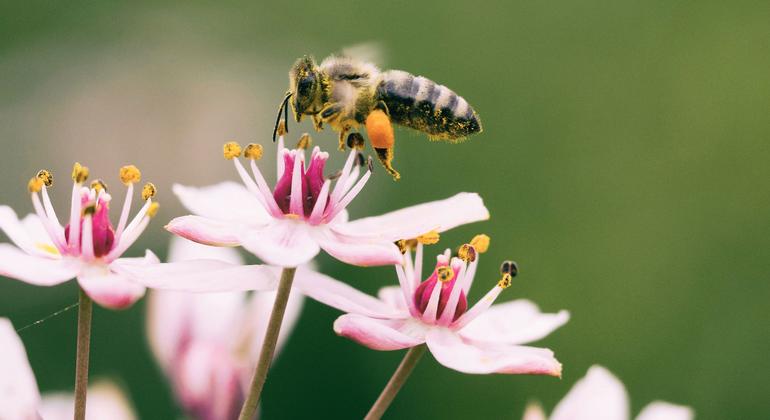The main factor currently leading to biodiversity loss is habitat destruction – on land and in streams, rivers, lakes and oceans.
Unless we dramatically reduce our use of fossil fuels, climate change alone is expected to threaten nearly a quarter or more of all species on Earth with extinction by 2050, overtaking even habitat loss as the greatest threat to life on Earth.
Ocean and freshwater species are also at great risk from climate change, especially those that live in ecosystems that are particularly sensitive to rising temperatures, such as coral reefs, but the full extent of this risk has not yet been estimated.
A healthy planet for healthy people
Losses in biodiversity affect human health in several ways. Ecosystem disturbance and biodiversity loss have significant impacts on the emergence, transmission, and spread of many infectious diseases that affect humans, and 60 percent of infectious disease pathogens, such as malaria and the Covid virus, are zoonotic, which means that they entered our bodies after living in other animals.
The virus that causes HIV/AIDS, which has killed more than 40 million people to date, likely came from the meat of chimpanzees slaughtered in west-central Africa. All in all, there may be 10,000 zoonotic viruses capable of hopping between species and to us and circulating silently in the wild today.
This is why the One Health approach – a collaborative, multisectoral, multidisciplinary approach that brings together various intergovernmental agencies, governments and local and regional actors to address both human health and environmental health – is so critical to reducing the risks of future disease outbreaks.
So, if we want to think egoistically, if the natural world is healthy, we will be healthy, too.
An insurance policy for the life of the planet
A major challenge for organizations working to conserve biodiversity is convincing others – policymakers and the public in particular – that we are fundamentally dependent on the animals, plants and microbes with whom we share this small planet. We are totally dependent on the goods and services that the natural world provides, and we have no other choice but to preserve it.
The World Economic Forum estimates that half of global GDP – about $44 trillion – depends on nature. Globally, the annual revenue of the pharmaceutical industry is $1.27 trillion, and the cost of health care in the United States alone is more than $4 trillion annually.
By comparison, the amount needed to close the funding gap for biodiversity conservation is only $700 billion a year. To keep the planet healthy and provide a life insurance policy, this number is not just a bargain, it is an urgent necessity.
Humans cannot exist outside of nature. Protecting the plants, animals, and microbes with whom we share our small planet is not voluntary, because it is these organisms that create the support systems that make life on Earth, including human life, possible.












